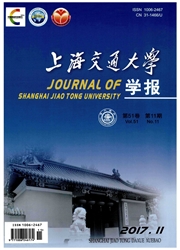

 中文摘要:
中文摘要:
近年来上海地区的地面沉降出现了第四承压含水层持续变形及滞后的新特征,传统土力学已不能完全解释其机理。针对上海地面沉降发展新变化,已有的研究从如下方面进行了探讨:针对沉降加剧现象,分析了城市化建设对地面沉降的影响;从砂土材料的蠕变性状出发,分析深部含水层过大变形的现象。上述两方面虽在一定程度上可解释沉降新特征,但还是不能完全阐明其发生机理。基于此,本文提出考虑含水层抽水后受力状态随空间与时间再分布的两种动态传力机理分析方法:(1)基于Cosserat力学体系的地面沉降模型考虑了水力梯度变化在砂土层中产生的剪应力,给出了考虑固结效应的Cosserat介质力学模型,可以很好地从含水层受力机理的角度解释含水层持续变形增大和变形滞后的发生机理;(2)水的渗透会对土骨架产生拖曳力,使粘性土的细颗粒在粗颗粒构成的孔隙中移动,发生内部侵蚀流动造成细颗粒流失,阐述了考虑细颗粒流失作用对地面沉降的影响及其地面沉降在含水层空间与时间重分布的发生机理。
 英文摘要:
英文摘要:
Recent land subsidence in Shanghai has fol owed a new pattern whereby the subsidence and deformation of the aquifer increase continuously, but the deformation lags the recovery in the groundwater level. Existing approaches to land subsidence prediction cannot reasonably interpret these phenomena. Consequently, new research was conducted to investigate the mechanisms associated with the new phenomena of land subsidence in Shanghai:i) the inlfuence of urban construction on increased land subsidence was investigated;and i ) the creep characteristics of sandy soil were analyzed to investigate the causes of increased aquifer deformation. This research explains the new phenomena of land subsidence to a certain degree, but could not identify the mechanism. The authors proposed two approaches to try and identify the load-transferring mechanism by considering the temporal and spatial redistribution of stress due to the withdrawal of groundwater. Firstly, a land subsidence model was established based on the Cosserat continuum mechanism. This model considers shear forces on an aquifer caused by groundwater pumping and hydraulic gradients. Secondly, the internal erosion of ifne particles in the aquifer, which leads to the redistribution of land subsidence in both space and time, was considered. Such land subsidence due to the internal erosion of ifne silty and clay particles in the pores of aquifer should be investigated.
 同期刊论文项目
同期刊论文项目
 同项目期刊论文
同项目期刊论文
 Experimental investigation of influence of acid rain on leaching and hydraulic characteristics of ce
Experimental investigation of influence of acid rain on leaching and hydraulic characteristics of ce Investigation of field-installation effects of horizontal twin-jet grouting in Shanghai soft soil de
Investigation of field-installation effects of horizontal twin-jet grouting in Shanghai soft soil de Engineering properties of recycled Calcium Carbide Residue stabilized clay as fill and pavement mate
Engineering properties of recycled Calcium Carbide Residue stabilized clay as fill and pavement mate Long-term settlement behavior of ground around shield tunnel due to leakage of water in soft deposit
Long-term settlement behavior of ground around shield tunnel due to leakage of water in soft deposit 期刊信息
期刊信息
